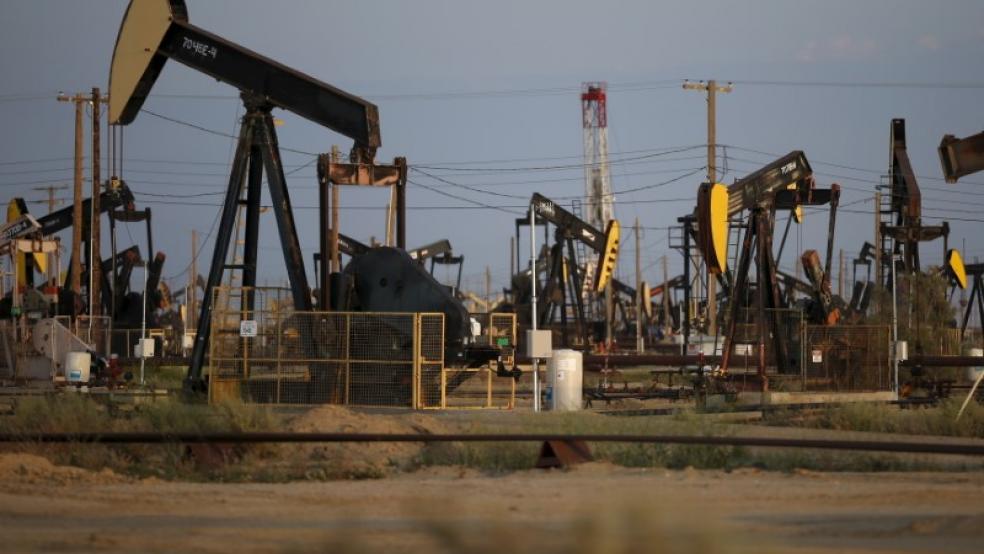LIVINGSTON, CALIF/CHICAGO (Reuters) - Residents of Livingston, California have sharply reduced their water usage during the state’s severe drought, now in its fourth year. But this summer, when state officials ranked how water suppliers had done meeting mandated conservation goals, the blue-collar town of 13,800 came in dead last.
Responsibility for the poor showing, city officials said, lies with Livingston's biggest water user, Foster Farms, the largest poultry producer west of the Rocky Mountains. The company’s sprawling chicken processing complex employs about 3,200 people and is the backbone of Livingston’s economy. It also sucks up roughly two-thirds of the city’s annual water supply, which has made meeting state mandated water-reduction targets virtually impossible, Livingston officials said. While many farmers across the state have lost water allotments or faced intense pressure to cut back, California’s agricultural industrial sector has largely avoided such public and regulatory scrutiny.Foster Farms’ Livingston operations offer a rare glimpse into that sector's water use and raise questions about whether food processors' water needs are compatible with conservation goals in drought-stricken areas.Agricultural industrial users that draw from their own wells were asked this year to cut water use by 25 percent or limit outdoor watering to two days per week. But according to regulators, the state's agricultural industrial users are essentially on the honor system. They haven't had their water use surveyed by state agencies in more than a decade, despite the severe drought. Because Foster Farms' plant draws from town water supplies, it was not included in that mandate, regulators said.“There has to be a strategy for getting these big water users to set and meet targets for improving their water use,” said Peter Gleick, president of the Pacific Institute, an environmental group. “I bet that we could produce more chicken per gallon if we wanted to.”But that goal is complicated, in part because of federal rules mandating food safety measures in poultry processing – steps that typically use a lot of water.California poultry processors slaughtered 244 million broilers last year – about 3 percent of the U.S. total, and plants use about two to 10 gallons of water per bird, according to industry data.Livingston officials said Foster Farms' plant uses 4 to 5 million gallons of water per day. The company declined to say how many birds it processes at the plant, nor how much water it currently uses per bird. WATER AND FOOD SAFETYPart of the challenge for Foster Farms and other food processors in California is how to conserve water without sacrificing safety. Federal regulators in 2014 started requiring poultry processors to boost measures to control the spread of salmonella in poultry products - and such measures can heavily tap water supplies for cleaning equipment, sanitizing carcasses and other steps. As a result, Foster Farms told Reuters, its total water use increased by 6 percent from 2014 to 2015.During the same time period, the company rolled out a $75 million project to reduce salmonella contamination from farm to slaughterhouse. The improvements came amid a salmonella outbreak that sickened hundreds of people, and which U.S. regulators linked to three of Foster Farms’ plants, including Livingston.Today, Foster Farms says its plants’ salmonella rates are the poultry industry’s lowest.The company also said it has taken steps to conserve water use over the years, and currently is working to further reduce use at the Livingston plant. It is employing new equipment that has brought the facility to 8 percent below its 2013 water use levels.And the privately-held company said it expects to spend $4.1 million as part of an ongoing water-conservation plan, in hopes of cutting its overall use by 20 percent or more in the next three months.FAILED WELLSEven with increased conservation from its chief water user, Livingston faces major water problems. The town’s water table has dropped 40 feet over the last year, straining old wells, said Gurpal Samra, Livingston’s mayor pro tem. And the drought has revealed the vulnerabilities of historically underfunded infrastructure.Foster Farms sued after Livingston raised rates in 2009. In the midst of the legal battle, the city council was recalled and the new leaders rolled back rates to 1995 levels.In 2014, a city-funded study reviewed by Reuters showed Foster Farms’ annual water bill in Livingston was far lower than in most California cities where it operates. The report concluded that service and water quality in Livingston had suffered from years of very low rates, which had also made the city ineligible for certain financial help.City officials revisited the issue and, in 2014, roughly doubled water rates.As California’s drought intensified, three city wells that either supply water or back-up Foster Farms’ plant began to fail. The company, which told Reuters it has partnered with the city on system upgrades and maintenance in the past, said it spent more than $140,000 to help fix those wells.“The well system is critical to ongoing operations at our Livingston facility,” Foster Farms said in an email to Reuters.WATER WOESAfter being called out by the state this summer, Livingston applied for and was granted a waiver to pursue different conservation goals.The alternative was untenable: If Livingston residents were forced to further cut back so the city could meet its 32 percent reduction target, people there would be left an estimated 11 gallons per person per day, an amount deemed unrealistic for basic health and safety needs, a state official told Reuters.Now, Livingston must take other steps, including teaching residents about water conservation and creating a water saving plan with Foster Farms.But some residents expect they will continue to shoulder most of the burden. “I’ve been seeing a day of reckoning coming for a long time,” said Schell-Rodriguez, who has replaced her lawn with less-thirsty succulents. “You can only kick the can down the road for so long.” (Reporting By P.J. Huffstutter; Editing by Sue Horton)Drought woes in California town highlight thirsty poultry industry

© Lucy Nicholson / Reuters



